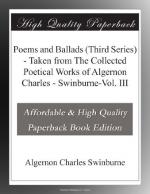|
This section contains 3,909 words (approx. 14 pages at 300 words per page) |

|
SOURCE: "The Aesthetics of Androgyny in Swinburne's Early Poetry," in Tennessee Studies in Literature, Vol. 23, 1978, pp. 87-99.
In the following essay, Harrison explores Swinburne's treatment of androgynous aspects of human sexuality.
Death and the achievement of organic continuity with the universe represent the end and culmination of sexual passion for the major figures in most of Swinburne's early poems. Yet it is the enduring condition of passion that provides the poet himself with his richest materials,
During his most productive years Swinburne undertook to characterize all conditions of passion and its concomitant suffering in men and women of all conceivable states of sexuality—from the noble masculinity of Tristram and Mary Stuart's courtier Chastelard, to Sappho's lesbian strivings for domination and penetration, to the perverse and "feminine" gentleness of the persona in "The Leper." Love is Swinburne's constant subject from his undergraduate lyrics of 1857 to his epic tour...
|
This section contains 3,909 words (approx. 14 pages at 300 words per page) |

|


